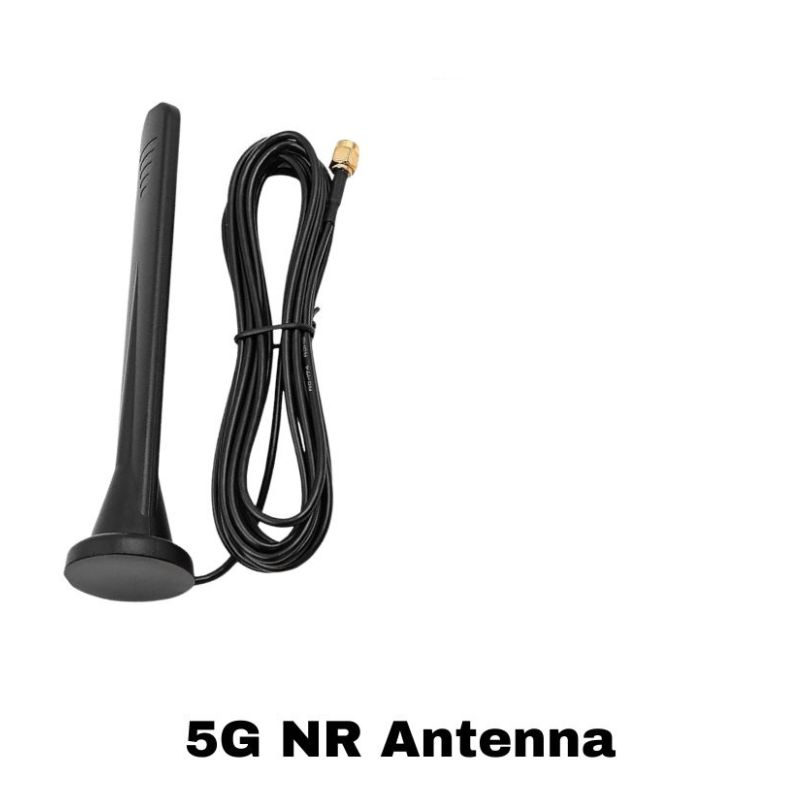- Home
- Service
- Product Center
- Application
- About Us
- Videos
- News
- Contact Us
2025-05-23 16:38:39
High-performance 5G New Radio (NR) antennas represent the cutting edge of wireless communication technology, designed to meet the demanding requirements of next-generation networks. These antennas are engineered to deliver ultra-low latency (under 1ms), multi-gigabit throughput (up to 10Gbps), and exceptional reliability (99.999% uptime) across various deployment scenarios. As 5G networks continue to expand globally, these advanced antennas play a pivotal role in enabling transformative applications from industrial IoT to augmented reality.

Modern 5G NR Antennas support operation across multiple frequency bands, including Sub-6 GHz (3.3-6 GHz) and mmWave (24-100 GHz) spectrums. This dual-band capability allows for optimal coverage and capacity balance, with Sub-6 GHz providing wider coverage (up to several kilometers) and mmWave delivering extreme capacity (up to 800 MHz bandwidth) in dense urban areas.
These antennas incorporate 64-element or larger phased arrays with digital beamforming capabilities, enabling precise beam steering with ±45° azimuth and ±15° elevation adjustments. The adaptive beamforming algorithms can track mobile devices with sub-degree accuracy and reconfigure beam patterns in microseconds, maintaining optimal signal quality even in dynamic environments.
High-performance 5g antennas feature Massive MIMO (Multiple Input Multiple Output) configurations with 32T32R (32 transmit, 32 receive) or higher element counts. This technology enables spatial multiplexing of up to 16 simultaneous data streams, multiplying spectral efficiency by 4-8x compared to conventional LTE systems while reducing interference through 3D beam nulling capabilities.
The antenna systems are optimized for end-to-end latency below 1ms, achieved through specialized RF front-end designs with signal processing delays under 100μs and beam switching times of 50μs. This is complemented by edge computing integration that places processing nodes within 10km of end users for mission-critical applications.
Designed for outdoor deployment, these antennas meet IP67 or higher ingress protection ratings, operating reliably in temperatures from -40°C to +85°C with 100% humidity tolerance. The structural design withstands wind loads up to 200 km/h and ice accumulation of 50mm without performance degradation.
5G NR Antennas enable smart traffic management systems with vehicle-to-everything (V2X) communication, supporting 10,000+ connected devices per square kilometer at latencies below 10ms. They also power public safety networks with guaranteed 99.9999% availability for emergency services.
In factory settings, these antennas facilitate wireless industrial Ethernet with deterministic latency under 2ms and packet error rates below 10^-9. They support AR-assisted maintenance with 8K video streaming at 120fps and millimeter-precision asset tracking.
For remote healthcare, the antennas enable 4K/3D medical imaging transmission with data rates up to 2Gbps and jitter below 50μs, supporting real-time robotic surgery applications. They also provide reliable connectivity for wearable patient monitors with 99.99% data integrity.
The high-gain, low-latency characteristics are critical for vehicle-to-infrastructure (V2I) communication, delivering 100ms end-to-end latency for collision avoidance systems across 500m ranges. The antennas also support HD map updates of 1GB in under 10 seconds.
For last-mile connectivity, these antennas provide gigabit broadband to homes and businesses with 99.9% availability and 20ms latency, serving as a fiber alternative. The beamforming capabilities maintain 300Mbps speeds at distances up to 3km from the base station.
Conduct visual inspections every 3 months, checking for:
Physical damage to radomes (cracks exceeding 2mm)
Corrosion on connectors (more than 5% surface area)
Water ingress signs (moisture detection threshold >15% RH)
Structural integrity (maximum allowable deflection 3° from vertical)
Clean antennas every 6 months using:
Deionized water with resistivity >18 MΩ·cm
Non-abrasive cleaning tools (surface pressure < 50kPa)
Isopropyl alcohol (99.9% purity) for connector cleaning
Compressed air (< 3 bar) for dust removal
Annual performance tests should include:
VSWR measurements (acceptable range 1.0-1.5:1)
Radiation pattern verification (±1dB gain variation tolerance)
Beam steering accuracy (< 0.5° error)
Throughput validation (>95% of rated capacity)
For harsh environments:
Apply corrosion inhibitor every 12 months (coating thickness 25-50μm)
Inspect lightning protection systems (ground resistance < 5Ω)
Verify heating elements function below -20°C (power consumption 200W/m²)
For intelligent antenna systems:
Update beamforming algorithms quarterly (compatibility with 3GPP Release 16+)
Calibrate RF calibration tables (0.1dB amplitude, 1° phase accuracy)
Monitor performance logs for >3% deviation from baseline
Note: Always follow manufacturer-specific maintenance schedules and use only approved cleaning materials to preserve warranty coverage. Record all maintenance activities including date, performed actions, and measured parameters for compliance and troubleshooting purposes.